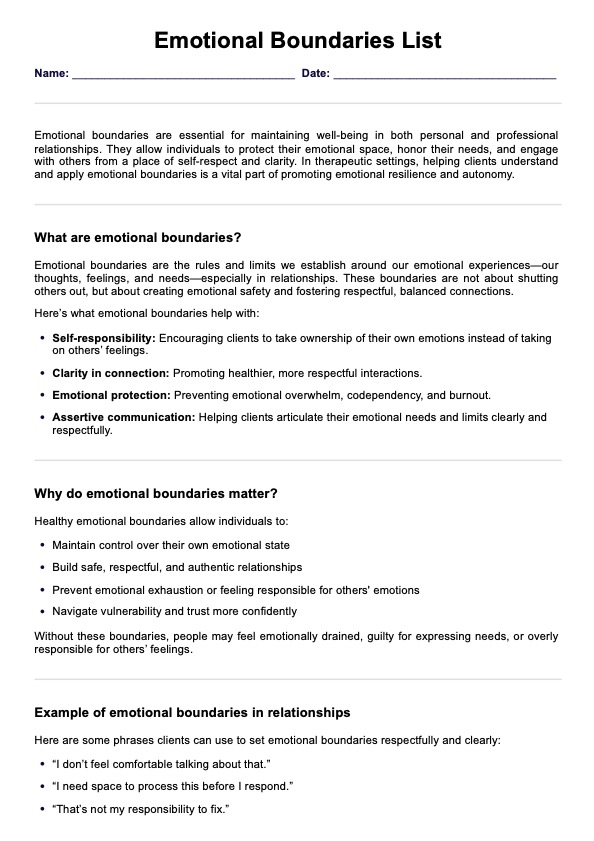An example of an emotional boundary is telling someone, “I need time to process before we continue this conversation.” This communicates personal emotional limits and protects your ability to respond thoughtfully rather than react impulsively.

Emotional Boundaries Lists
Download our free Emotional Boundaries List PDF to help patients set healthy boundaries across various relationships and situations.
Use Template
Emotional Boundaries Lists Template
Commonly asked questions
Normal boundaries in a relationship include respecting each other’s need for personal space, emotional privacy, and the right to say no. They help maintain balance, trust, and emotional safety between partners or individuals.
Weak emotional boundaries occur when someone absorbs others' feelings, overextends emotionally, or struggles to say no. This often leads to emotional exhaustion, low self-worth, and difficulty maintaining one’s identity.
EHR and practice management software
Get started for free
*No credit card required
Free
$0/usd
Unlimited clients
Telehealth
1GB of storage
Client portal text
Automated billing and online payments











